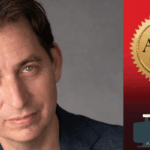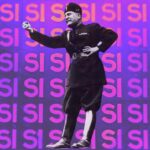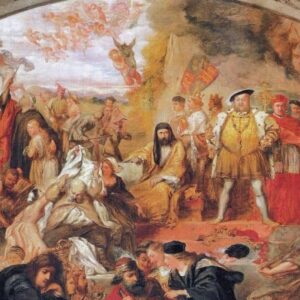Every writer’s dream is to make the New York Times bestseller list. It doesn’t matter if you write crime fiction, thrillers, or cozies, that fantasy bounces around the subterranean nooks and crannies of the writer’s brain just waiting, wondering, fantasizing—will it ever happen to me?
It did to Jon Land, and he didn’t even know it.
Jon made it big as a paperback writer in the 1980s. He sold more fiction in airports than everyone but the very biggest bestsellers at the time like Clive Cussler and Robert Ludlam. But he had never made the NYT cut.
In a 2020 interview he talked about his life and career and how he hadn’t made the list. At the time, he had no idea he was wrong. A fan contacted him and informed him his book The Last Prophecy did make the New York Times bestseller list for a week in December 2004—more than sixteen years before the interview.
“I was on the USA Today bestseller list for ten years and didn’t even know it.”
For Jon, ignorance was not bliss.
It’s safe to say little could surpass the satisfaction of having made it onto the nation’s two most prestigious lists. And yet Jon never intended on becoming a writer, so maybe it was in keeping that he had no idea of his own success.
Instead, he says, “There was no doubt I was going to be a lawyer.” That idea began to fall apart when he entered Brown University. Lucky for him his professor allowed him to write a novel as his senior thesis.
“I’d never taken a writing class,” he says. “If it wasn’t for Brown’s curriculum and the freedom to change horses in the middle of the stream, none of this would have happened.”
“I got bit by the bug, and I fell in love with the writing process, and I also fell in love with seeing my name in print. I started writing for magazines while a junior in college. My first byline was for People Magazine.”
Not a bad start.
The editors rewrote his entire story, and he jokes the only thing he recognized was his byline. But that was good enough. It was in all CAPITAL LETTERS. You might as well have written HOOKED in all caps too. Jon was smitten.
After People magazine, he wrote for the Saturday Evening Post. Editor Hollie Miller called him in his dorm room and told him one of their profile writers had just retired. She asked if he would interview Natalie Wood and Robert Wagner. He did and it ended up being one of the last interviews Wood ever did before she drowned in the Pacific Ocean off Catalina Island. Later, just out of college, he interviewed actor and dancer Gene Kelly.
By graduation, he could think of nothing he wanted more than to write. Since his folks were not footing the bill for a law degree, they agreed to support him temporarily while he started his writing career. “I had a very supportive family. I can’t say they were happy about my decision, but they respected it.”
It is the life he chose, he says, paraphrasing one of his favorite lines from movie “The Godfather II.”
“I chose this business and I continue to be rejected and disappointed all the time. But one in ten are successes.” And what a feeling that ten percent is.
Right out of college he wrote day and night and lived like a monk consuming two or three books a week while penning his first. “I had no life. I wrote every single day for four weeks. I didn’t take a day off. If I had stopped, I would have doubted myself. How do you have confidence in something you’ve never succeeded in?”
He finished 600-page draft manuscript he called “The Shaitan Commandment.” Shaitan is Arabic for Satan. His manuscript was about Arab terrorists plotting to kill millions of Americans using biological warfare.
A family friend was an agent and took him on after a six-month search. After dozens of rejections, Jon received a call in 1982 that his book had finally been sold. He got a $1,750 advance, to be paid in two installments and his first book, which was retitled The Doomsday Spiral by his publisher, joined the booming mass market paperback book trade.
Timing was everything, he says. “I found success in the heyday of mass market paperbacks…which is what digital became.” It was the era of thrillers by the likes of Ludlum and Cussler, and Land was hoping to break out. His publisher told him about the late Jacqueline Susann who achieved success for years before her untimely death at age 56 in 1974. He suggested Jon try her technique.
Susann was famous for handing out swag and other gifts to truck drivers and warehouse workers who delivered books to airports and bookstores back in the 1960s. Jon began to meet with wholesalers and distributors and learning the backroom machinations of the book business. (Believe it or not, there were 469 book distributors back then.)
His efforts paid off. His sales soared. “There are some airports where I set records.” Yet, like learning he had made the bestseller lists, he didn’t know how good his book sales were until he got his royalty check a year later. “There were no computers then to check on sales.”
He describes his books as “an impulse buy, not a destination buy.” But they sure sold.
He didn’t rely on a book tour or interviews for his success. Instead, his publisher had an incentive plan. For every four books sold, the publisher gave an incentive for the fifth. Jon’s books were number one around the country, but not in big cities. His publisher used co-op marketing dollars in smaller markets around the country and each of his first thirteen paperbacks hit number one in airports about a month after launch.
“Success in the 80s was a creature of the mass market. You can’t control that,” Jon says. “Writers must take control of what they can. Don’t pigeonhole yourself.”
He’s taken his own advice. His career has bounced up and down since the 80s. His most successful books are his Caitlin Strong thriller series. He has written both his own novels and continued a series for others as a ghostwriter. He says there’s a lot more satisfaction with his name on the cover. “I don’t have the same pride if it’s not mine.”
And he had one movie deal, “Dirty Deeds,” released in 2004. But, he says, “Writing is who I am. It’s what I am. It all goes back to that first book, The Doomsday Spiral. There’s a lot that has to go right.”
Yet he has not just survived but thrived among the small class of thriller authors who make a good living at the job they love. An important lesson he’s learned over the years is don’t stop writing. “When you stop, you question. So, you keep going. The business of writing is the story of the tortoise and the hare. You have to be the tortoise.”
“The most I can write at one time is about two hours…By splitting it into two sessions,” he says, “I may not have liked what I did in the afternoon, but I can redeem myself that night.”
He’s a pantser whose philosophy is, “The more fun you have writing a story, the more fun the reader will have…If you can’t put it down…that’s the definition of a thriller. It’s not so much the genre as it is the ability of the author to move you.”
He’s been doing this for a long time, and he credits his beginning and the initial support from his family for much of his success for choosing the life of a writer over a legal career.
“I remember calling my grandfather, the one most disappointed I didn’t go to law school. He had pulled all these strings to get me into Harvard Law School. Yet he adopted my dream of having a grandson who’s a published author.”
After his grandfather had a heart attack, Jon visited him in the hospital. “You made me a celebrity in here,” his grandfather told him. “I tell all the nurses my grandson is a famous author.”
Says Jon, “There was a different kind of pride, as if I’d been a lawyer.”
No ignorance this time. Just bliss.
___________________________________
The Doomsday Spiral
___________________________________
Start to Finish: 2 years
I want to be a writer: In college
Decided to write a novel: In college
Experience: Magazine writing
Agents Contacted: Not many
Agent Rejections: A handful
Agent Submission: Six months
Time to Sell Novel: One year
First Novel Agent: Toni Mendez
First Novel Editor: Michael Seidman
First Novel Publisher: Zebra (Kensington) paperback
Age when published: 26
Inspiration: Stephen king, Robert Ludlum, Clive Cussler, David Morrell, Ira Leavit, Irving Lawless
Website: jonlandbooks.com
Advice to Writers: Have fun telling a great story. If you have fun as a writer, the reader will have fun.
Like this? Read the chapters on Lee Child, Michael Connelly, Tess Gerritsen, Steve Berry, David Morrell, Gayle Lynds, Scott Turow, Lawrence Block, Randy Wayne White, Walter Mosley, Tom Straw. Michael Koryta, Harlan Coben, Jenny Milchman, James Grady, David Corbett. Robert Dugoni, David Baldacci, Steven James, Laura Lippman, and Karen Dionne.


















